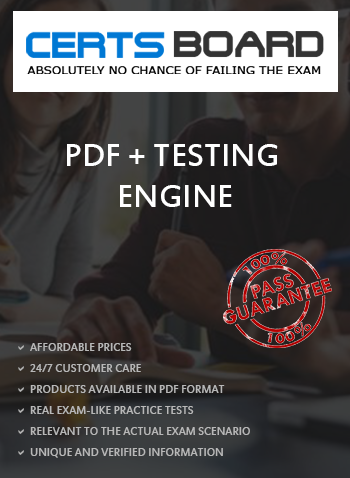
Last Update Dec 18, 2025
Total Questions : 260

Last Update Dec 18, 2025
Total Questions : 260


Management Accounting
Last Update Dec 18, 2025
Total Questions : 260
Why Choose CertsBoard
Customers Passed
CIMA P1
Average Score In Real
Exam At Testing Centre
Questions came word by
word from this dump

Try a free demo of our CIMA P1 PDF and practice exam software before the purchase to get a closer look at practice questions and answers.

We provide up to 3 months of free after-purchase updates so that you get CIMA P1 practice questions of today and not yesterday.

We have a long list of satisfied customers from multiple countries. Our CIMA P1 practice questions will certainly assist you to get passing marks on the first attempt.

CertsBoard offers CIMA P1 PDF questions, web-based and desktop practice tests that are consistently updated.

CertsBoard has a support team to answer your queries 24/7. Contact us if you face login issues, payment and download issues. We will entertain you as soon as possible.

Thousands of customers passed the CIMA Designing CIMA Azure Infrastructure Solutions exam by using our product. We ensure that upon using our exam products, you are satisfied.
The manager of a recently opened cafe is deciding how many sandwiches to make each day.
The sandwiches are made in the morning before the cafe opens.
If demand exceeds the number of sandwiches made in the morning no extra sandwiches can be made during the day. Any unsold sandwiches are thrown away at the end of each day.
Daily demand is uncertain but is predicted to be 10, 20, 30 or 40 sandwiches.
The following regret matrix has been prepared:

If the minimax regret criterion is used to make the decision, the manager will choose to make:
Place the type of budget or cost against its definition.

The standard production cost of making a product is as follows:

What is the fixed production overhead efficiency variance?
Give your answer as a whole number.